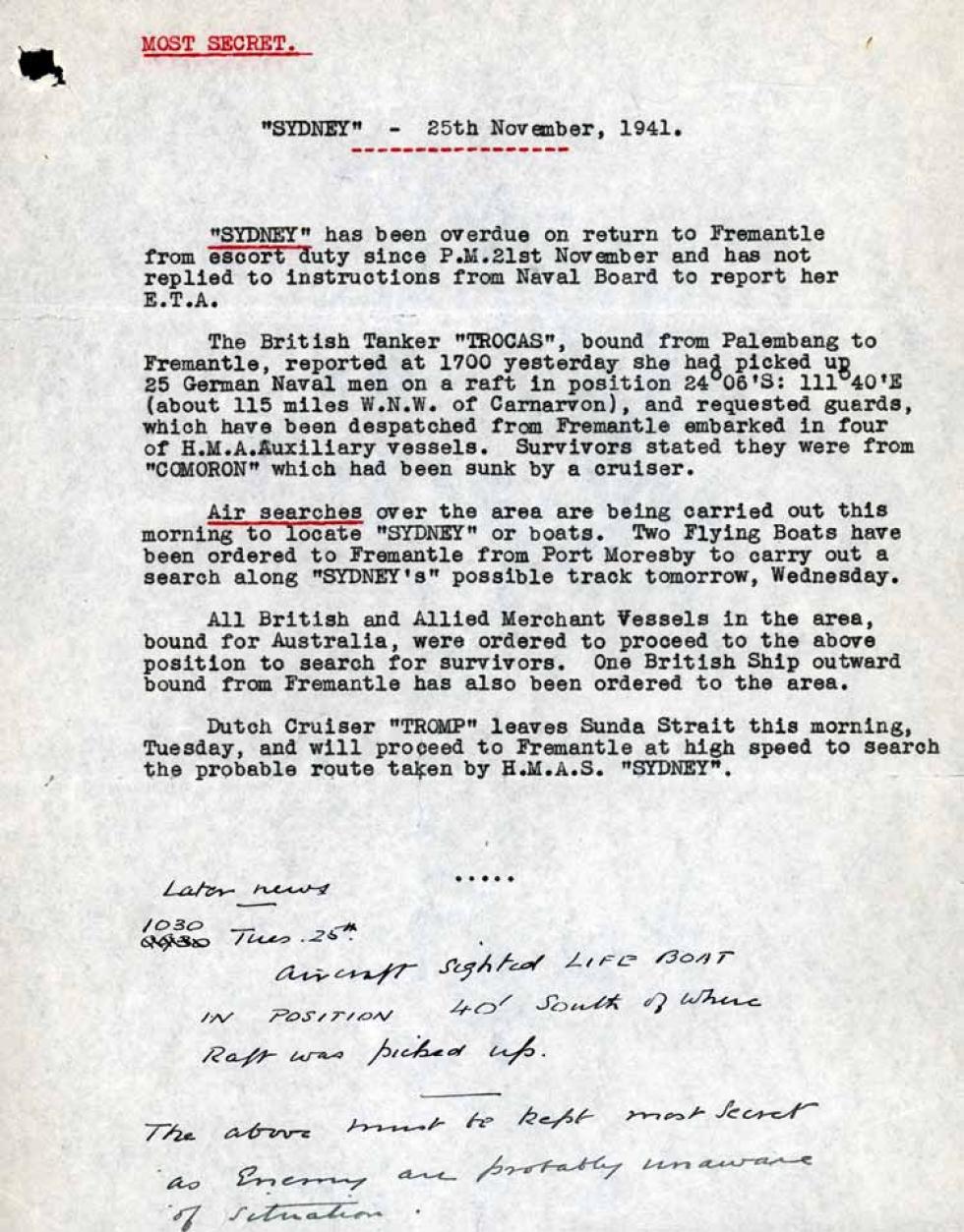
Most secret report of the missing ship, with annotation.
Aboriginal and Torres Strait Islander people should be aware that the National Archives' website and collection contain the names, images and voices of people who have died.
Some records include terms and views that are not appropriate today. They reflect the period in which they were created and are not the views of the National Archives.


Most secret report of the missing ship, with annotation.
[Red text] MOST SECRET. [Underlined]
"SYDNEY" – 25th November, 1941. [Dashed underline, red]
"SYDNEY" [Underlined, red] has been overdue on return to Fremantle from escort duty since P.M.21st November and has not replied to instructions from Naval Board to report her E.T.A.
The British Tanker "TROCAS", bound from Palembang to Fremantle, reported at 1700 yesterday she had picked up 25 German Naval men on a raft in position 24⁰06'S: 111⁰40’E (about 115 miles W.N.W. of Carnarvon), and requested guards, which have been dispatched from Fremantle embarked in four of H.M.A. Auxiliary vessels. Survivors stated they were from "COMORON" which had been sunk by a cruiser.
Air searches [underlined, red] over the area are being carried out this morning to locate "SYDNEY" or boats. Two flying Boats have been ordered to Freemantle from Port Moresby to carry out a search along "SYDNEY'S" possible track tomorrow, Wednesday.
All British and Allied Merchant Vessels in the area, bound for Australia, were ordered to proceed to the above position to search for survivors. One British Ship outward bound from Fremantle has also been ordered to the area.
Dutch Cruiser "TROMP" leaves Sunda Strait this morning, Tuesday, and will proceed to Freemantle at high speed to search the probable route taken by H.M.A.S. "SYDNEY".
…..
[Handwritten] Later news [underlined]
1030 [written above 930, which is crossed out] Tues. 25th.
aircraft sighted LIFE BOAT IN POSITION 4O' South of where Raft was picked up.
[Line]
The above must be kept most secret as enemy are probably unaware of situation.
Dated 25 November 1941 and headed 'MOST SECRET', this document reports that the Royal Australian Navy light cruiser HMAS Sydney was four days overdue into Fremantle and had not responded to Naval Board instructions. It states that a British tanker had picked up 25 crew members from a German ship sunk by a cruiser, and that an air and sea search was under way for the Sydney. Handwritten notes dated 26 November indicate that a lifeboat had been sighted and emphasise the need for secrecy.
Learning resource text © Education Services Australia Limited and the National Archives of Australia 2010.
Learn how to interpret primary sources, use our collection and more.
